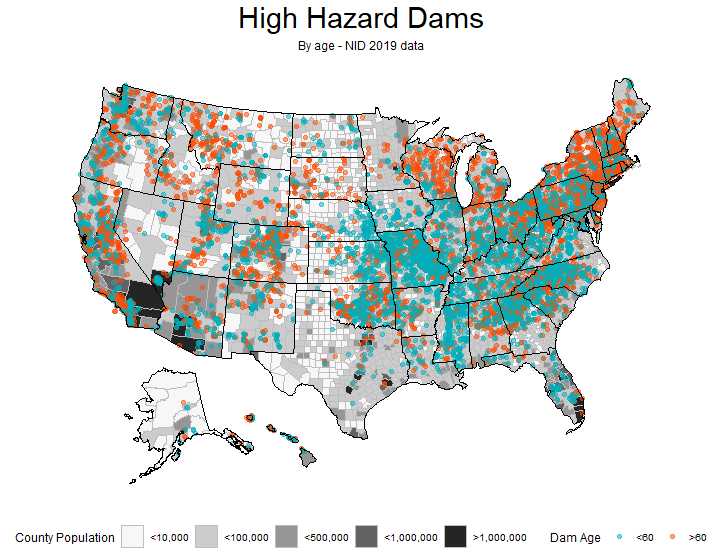Dams in the U.S.
The existing dam hazard classifications in the United States do not formally characterize “hazard hotspots” considering the cascading impacts to critical infrastructure, such as water and wastewater treatment plants, electricity generation facilities, bridges, highways, population centers and other dams often lie below a dam. Given that there are over 90,000 dams with different states of repair, maintenance, and budgetary constraints, a better way to rank their potential hazard and allocate resources for risk mitigation is needed.
The Columbia Water Center developed an approach for rapidly assessing the magnitude and exposure of a dam failure for a preliminary ranking of the priority areas of concern that is scalable over many regions. The estimation of the consequences of a dam failure include direct financial losses, affected critical infrastructure and population. The framework uses publicly available dam break and consequence tools and national infrastructure datasets.
Publications
Concha Larrauri and Lall, (2020). Assessing the Exposure of Critical Infrastructure and Other Assets to the Climate Induced Failure of Aging Dams in the U.S.
Ho, M., Lall, U., Allaire, M., Devineni, N., Kwon, H. H., Pal, I., Raff, D., and Wegner, D. (2017), The future role of dams in the United States of America, Water Resour. Res., 53, 982– 998, doi:10.1002/2016WR019905.

